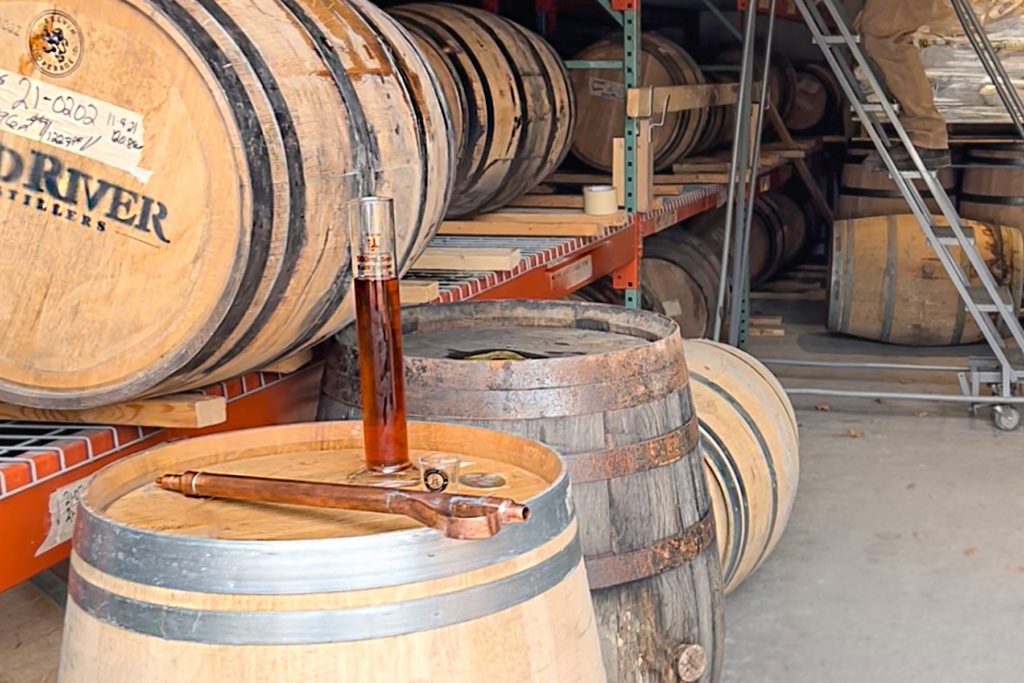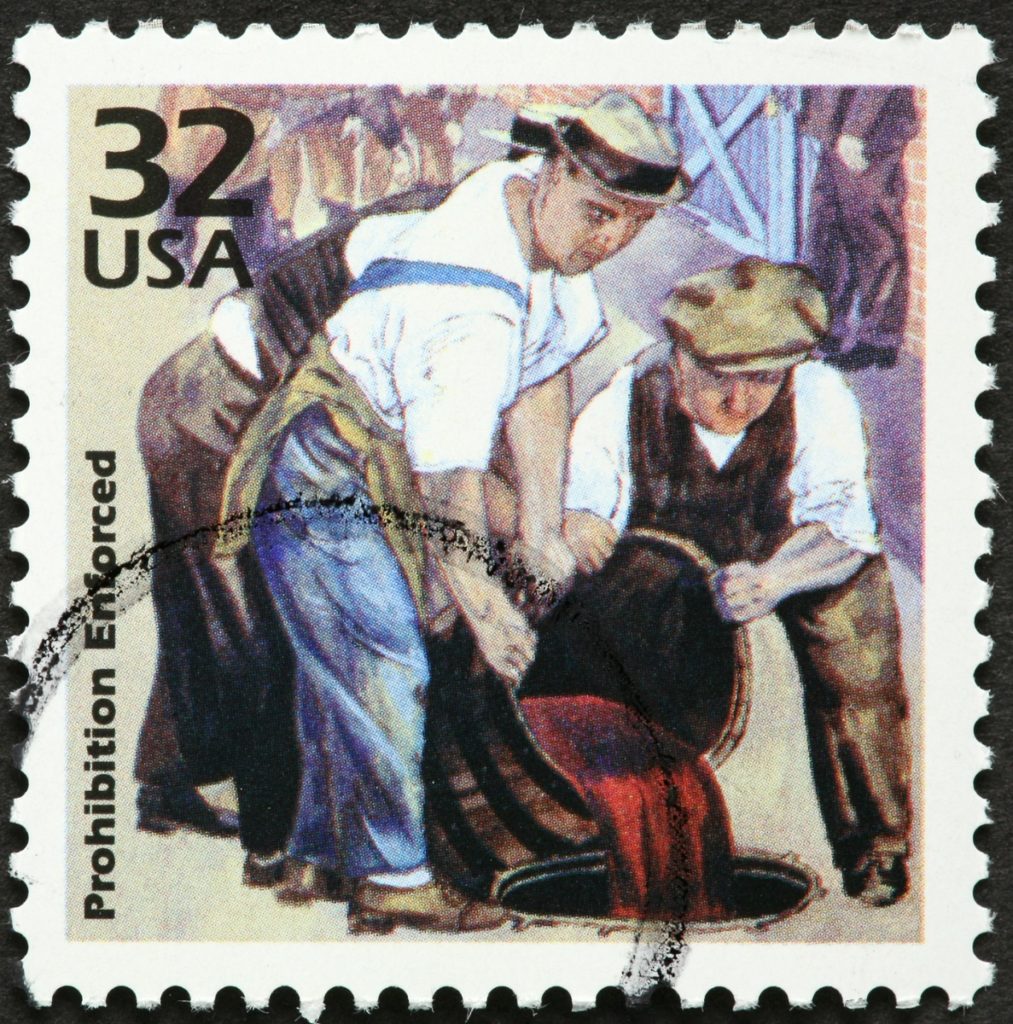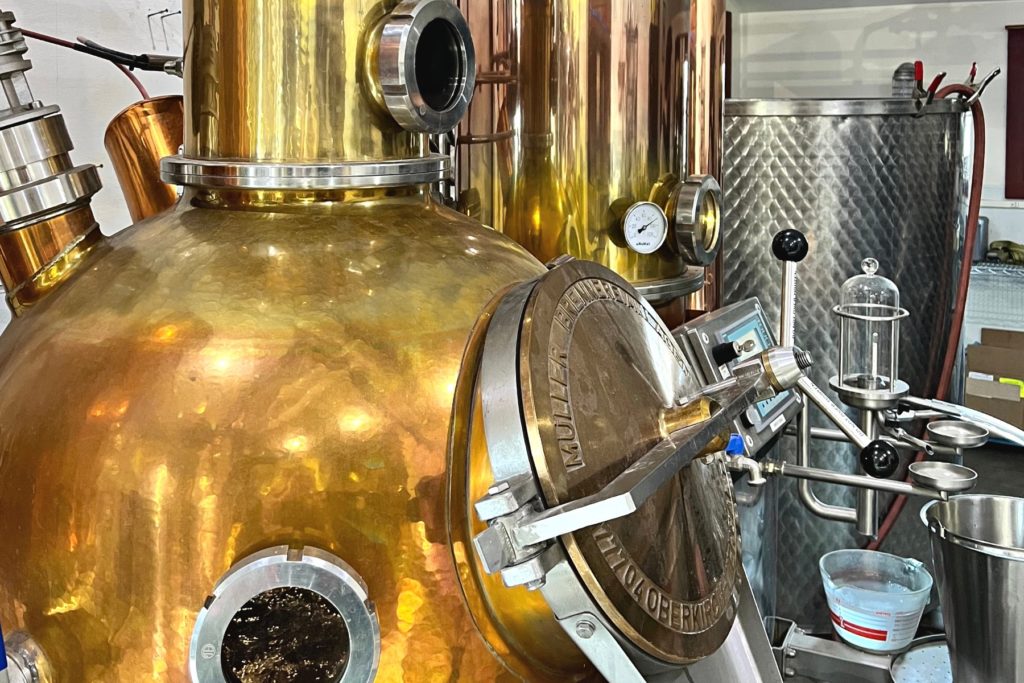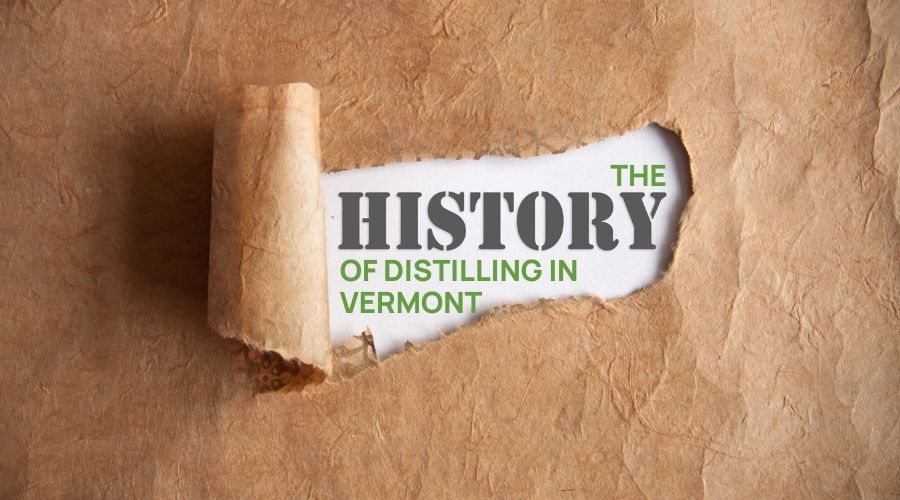The History of Distilling in Vermont
The history of distilling in Vermont is a snapshot in moments of time.
The role of the distilling industry has changed over time in Vermont, but also nationally. It has moved from an important food preservation method and seasonal industry to a year round artisan craft industry. The transformation of the industry was far from seamless. The craft movement that we appreciate today rekindled only three decades ago in Vermont. The history of alcohol and distillation in Vermont is rather unique.
Distillation in the year 1800 had a completely different cultural role than the contemporary distilleries in Vermont today. To look at distilling over 200 years ago, we need to look at it through a different historical lens: food preservation and calories. Simply put, the fermentation and distillation of grains, fruits, and sugars created a shelf stable source of calories as opposed to the raw materials themselves.
Another aspect was that fermented and distilled beverages were safe to consume on a microbial level. It was not until Louis Pastuer discovered bacteria and microbiology theory in the 1860’s on food and water contamination, we understood what we consumed. Drinking the water in many places could lead to severe illness and death. Until that discovery, it was not completely understood why beer, cider, wine, spirits, coffee, and tea were fine to consume. Certain water sources were fine while others were dangerous, and there was no way to be certain of safety.

Vermont had the land and climate where apples thrived. A strong agricultural industry took hold. This allowed the flourishing that existed between brewers and distillers very early on. In the 1820 Vermont agricultural census, over 260 operational distilleries were noted. In fact, there were more distilleries than towns in the state. Peacham, a small town in southern Caledonia County, had 7 operating stills at the turn of the 19th century.
Throughout the newspapers of the early 19th century in Vermont, there were numerous advertisements from distilleries trying to procure raw ingredients for the operation. These advertisements would often start appearing in the late fall and run through the winter. The main materials there were sought by Vermont distilleries were barley, wheat, oats, and cider. Some operations worked on the bartering system, while others paid hard currency. The bartering often worked with a farmer or producer bringing cider or grains in exchange for a portion of the spirits produced.
Historically, distilleries in Vermont were not year-round operations. They were based on an agricultural product (attention was needed to other endeavors throughout the year). The distillation industry was only a short seasonal product. Often, the distilleries ran as long as they could source raw materials, but in 19th century Vermont, the season typically ran from mid fall through early winter.
Most distilleries were dynamic operations, often part of a group of businesses operating together. Many of the distilleries also operated as breweries, mills, malt houses, and potash producers. In the present, distilleries are now year-round operations. This is due to the availability of raw materials and the social demand that alcohol now holds in modern society.

Prohibition took hold of Vermont in 1853, long before Federal prohibition in 1918. This was a response to the rapidly growing temperance movement, which drew attention to the problems of excessive alcohol consumption. When the Second Great Awakening religious movement arose, a strong and opposite force started to emerge.
The temperance movement.
The temperance movement emerged in Vermont in the 1820’s, as a response to what was documented as rampant excessive consumption. In 30 years’ time, the Temperance movement became powerful. It persuaded the Legislatures in Montpelier to enact a few different versions of Prohibition, until full state Prohibition began in 1853. This remained “on the books” until state repeal in 1902. Most areas of Vermont were dry though the repeal of Federal Prohibition.
Many breweries and distilleries in New England folded during the period of Federal Prohibition from 1920 thru 1933. The original bill that the United States Legislature proposed was in December of 1917, and was not ratified by enough states until 1919. This gave some brewers and distillers the time and opportunity to pivot operations. However, the pressure of prohibition’s looming cloud, paired with the 1918 Influenza pandemic, forced the hand of most producers.
In some very few cases, distillers and brewers were able to secure government contracts. This allowed them to produce beer and spirits for medicinal or military purposes. Some pivoted to producing malt syrup, soft drinks, or whatever they could to survive. Most, however, did not survive.
In Vermont’s case, because state prohibition began in 1853, there were no distilleries in operation during Federal Prohibition. This can be seen from information in the Vermont Manufacturing census records from the 19th century. There was one brewery in Burlington grandfathered in, but unable to sell their products in the state due to the laws in place. All of the beer was shipped across Lake Champlain. There were no official distilleries in operation, but illicit stills and distilling operations were rampant across the state. After federal prohibition was repealed, a distillery first emerged in Burlington—The Green Mountain Distillery Company. The distiller was operated by Frank H. Mahoney, who previously handled operations for New England Distiller Inc. (A. Manning Co.).
The Green Mountain Distillery Company produced maple liquor that was derived from maple syrup. The distillery also produced rum. Operations were very short lived, however, operating for just a handful of years. The raw material for the product was costly, and other costs were rapidly rising as the U.S. moved from the Great Depression to World War II. The distillery was sold in 1942 and switched operations to producing alcohol for the Federal government, under contract. While lucrative, the distillery ultimately shuttered (Carlisle, Lillian Baker). The building is still visible, located at 101 College Street in Burlington (S, n.d.).
The idea of producing spirits from maple as well as using maple in liquors was rekindled once again in 1986 by Steve Isreal and Brian Tyrol in Waterbury, Vermont, with the Vermont Distillers Company. Israel was also a founder of Catamount Brewing Company in White River Junction, the first brewery in Vermont in a century. The distillery started producing Mad River Vodka, Veranda Gin, and Tamarack Liquor, a blend of maple and spices blended in Kentucky bourbon in 1989 (Carlata, Marialisa). The distillery shuttered in the mid 1990’s.
It was not until late 1999 that Vermont had a distillery again. Duncan Holoday launched the second legal distillery in over half a century (and the third one in almost a century and a half) on his property in Barnet, Vermont. The Vermont Spirits Distilling Company started off producing vodka from a local source, maple, later adding other products. One product was vodka, produced from milk. The company moved operations to Quechee in 2011. A pioneer of the modern Vermont craft distilling movement, Holoday received the American Distilling Institute’s 2019 Lifetime Achievement Award. He also started the Vermont modern craft spirits movement.
The resurgence of Vermont’s distilling industry has a focus on local agriculture.

Distillers have made the use of local or regional ingredients a focal point in producing their spirits. This offers customers a unique experience in the glass. It also gives far more character to the spirits produced—farm-to-glass, if you will.
There’s another factor here. Most distillers learned the craft of distilling hands-on, within the Green Mountain state. This, in turn, translates to artistic interpretations and unique products. It also allows distilleries to not be constrained, with the freedom to experiment. At the moment, the distilling industry in Vermont consists of almost 20 distilleries. It is a far cry from the number of distilleries operating at the beginning of the 19th century.
Between the craft of distilling and the use of local ingredients, the distilling industry in Vermont has laid a very strong foundation for future growth. The amount of awards the industry has received helps to further their cause. I believe Vermont distillers will continue to flourish for many years to come.
To learn more about Vermont’s Prohibition history, read Adam Krakowski’s new book, Vermont Prohibition: Teetotalers, Bootleggers & Corruption, which you can find at our Burlington Tasting Room, your local independent bookstore, or The History Press online.
Written by Author Adam Krakowski and edited by Brianne Lucas and Mimi Buttenheim. Published on May 23, 2022.
REFERENCES:
H.A. Manning Co. Manning's Burlington, Winooski, and Essex Junction Directory of 1938. (Springfield, MA, 1938). 88. Microfiche
Carlisle, Lillian Baker. "Green Mountain Distillery: The Saga of a Vermont Industry that almost made it", Chittenden County Historical Society Bulletin (Burlington, VT: Summer 2003), 6
S, E. (n.d.). Local and global manufacturers in downtown Burlington by Egbert Stolk. Local and Global Manufacturers in Downtown Burlington. Retrieved May 23, 2022, from https://www.uvm.edu/%7Ehp206/2013/pages/stolk/index.html
Carlata, Marialisa. “Maverick Distillers in Vermont Produce Maple Syrup With a Kick”, The New York Times. Feb. 15, 1989. Section C, Page 1
Krakowski, A. (2016). Vermont Prohibition: Teetotalers, Bootleggers & Corruption (American Palate). The History Press.





